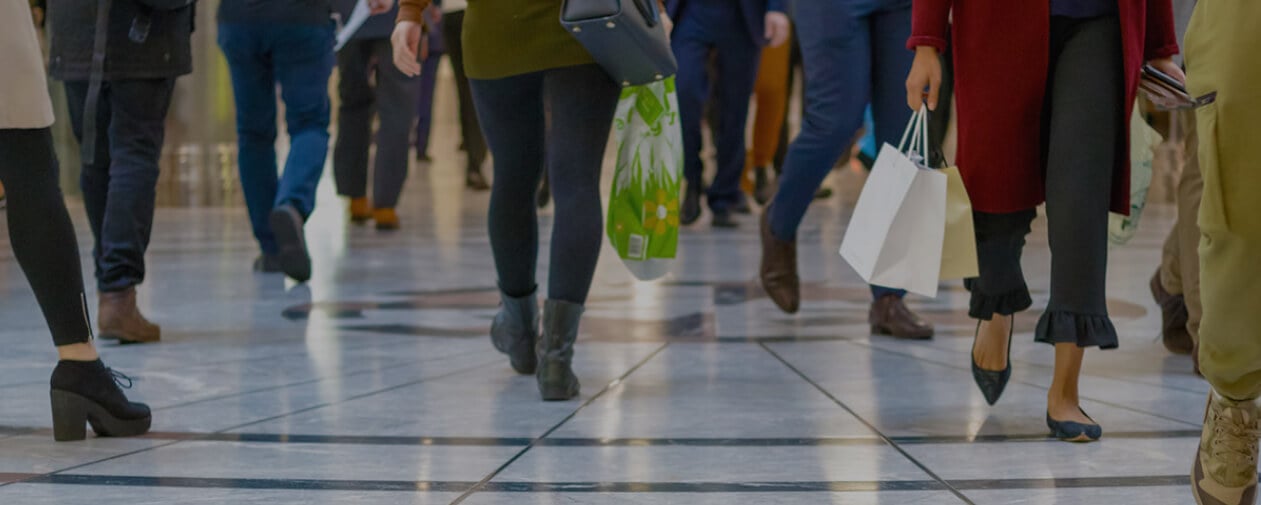These are topsy-turvy times.
Brick-and-mortar retailers appear to be facing a challenging road, from both an operational and employment standpoint. Uncertainty is swirling around several pressing issues, from high prices and shipping delays to staff shortages and online competition.
But there’s one thing we know for sure: Shoppers still want to visit stores.
E-commerce remains strong but slowed in 2022. And some major retailers and brands have invested more in physical retail. Ross Stores opened 40 new locations in the fall of 2022. DTC brand Warby Parker opened 13 stores in 2022’s third quarter, and Nordstrom Rack plans to open eight new stores in 2023.
On this foundation of optimism, retailers can prepare to manage some of the changes that are predicted to affect retail operations, sales, and the in-store shopping experience.
We’ve compiled a summary of forecasts for 2023, gleaned from our industry sources.
Showrooms and smaller stores will be more popular.
Showroom stores have advantages such as lower build-out costs, reduced labor/payroll, less on-hand inventory, and lower rent and next-day shipping charges. It makes this type of investment enticing.
More and more retailers will settle into smaller spaces for the reasons listed above, plus the benefit of getting into more attractive “neighborhood” or high street locations. A recent NRF report forecasts that smaller-footprint stores will flourish. “Today’s new builds deliver competitive advantage with a precise mix of neighborhood awareness, personalized inventory assortments, and right-sized footprints.”
Resale revenues will rise.
Resale/used/circular retail is set to explode. Consumers appreciate that it’s good for the environment, makes it fun to shop, and is inexpensive to boot.
A May 2022 ThredUp survey predicted the secondhand apparel market will reach $82 billion by 2026, and clothing rentals are becoming de rigueur. In fact, research shows that consumers are receptive to visiting “used” areas in every retail vertical, including big box, consumer electronics, hardware, department stores, and specialty retail.
Shoppers will demand a more cohesive online/offline experience.
Physical stores must support sales and fulfillment for both online and offline customers.
It’s essential to have an engaging sales floor that facilitates the offline shopping experience. At the same time, your stockroom must be optimized for online order fulfillment—including in-store pickup, shipping, and local delivery.
Omnichannel marketing will be table stakes.
With shoppers using a blend of devices and platforms in their shopping journeys, it’s vital to have a well-integrated strategy across all channels: in-store, online, social media, and SMS. Customers should have a consistent brand experience from one touchpoint to the next.
For best results, integrate your marketing solution with your POS and retail management system, so you can better track your efforts and ROI.
Consumers will expect more payment flexibility.
Inflation remains a major concern for shoppers. Aside from reallocating their budgets to essential items, inflation will also prod more people to charge purchases. Shoppers strapped for cash may also explore alternative payment methods, such as “buy now, pay later” and layby/layaway services.
Labor shortages will continue.
The retail industry’s labor issues will persist in the coming year. Solving hiring concerns may involve revisiting your salary and benefits packages to make sure they’re competitive. Consider offering perks such as flexible work schedules to attract employees.
The demand for experiential retail will grow.
Want a competitive advantage in 2023? Recognize that experiential retail is where it’s at.
This is particularly true for specialty, lifestyle, and high-end retailers. It’s all too easy for physical goods to be commoditized these days. Counter this with experiences that shoppers won’t find anywhere else.
The right experience depends on the store format and its customers. Some retailers find success by offering classes and events. Others elevate the shopping experience through immersive in-store design and merchandising. Understanding customer preferences and testing can help you find the right approach.
Consumers will help sustainability initiatives thrive.
Expect a more significant focus on sustainability and corporate social responsibility. Selling ethically sourced and implementing green business practices is increasingly important to consumers.
Consumers are more inclined to support companies that invest in CSR. According to Harvard Business School, 77% of shoppers are motivated to buy from businesses that are committed to making the world a better place, and 55% believe companies should take a stand on key environmental, political, and social issues.
Modern shoppers want to align with brands that share their values.
Livestream shopping will make inroads.
Livestream shopping, making its way from China to the U.S., is the practice of promoting and selling products through livestreams on digital platforms. It’s an interactive experience that allows viewers to ask questions in real time and complete purchases on the spot.
Research estimates livestream e-commerce penetration will grow from $20 billion in 2022 to $57 billion in 2025. TikTok, Amazon Live, and Instagram are the top platforms for livestream shopping.
Livestream shopping could be worth exploring, particularly if you already work with influencers and have a strong social media presence.
Much like livestreaming, virtual assisting also provides instantaneous, interactive access to product information, product demos, and a live expert who can answer customers’ questions in real time. AskMe™ is an excellent virtual assisting tool. Whether in the store or out and about, a shopper can use their chosen device to connect with a knowledgeable brand expert.
Hybrid retail will become a thing.
More retailers are becoming hybrid locations, with offerings beyond inventory. They are setting up services, event spaces, and coffee shops within their locations. This gives retailers greater potential to provide exciting experiences.
At the same time, companies in other industries are adding retail components to their businesses. Whether it’s a spa or salon selling beauty products on-site or pop-up exhibits adding a store on the way out, businesses are finding ways to maximize revenue through retail.
No More Short-Term Planning
A Forrester report, Prediction 2023, says that smart business leaders will prune efforts not bearing fruit and prioritize long-term growth. “Economic and geopolitical turmoil will sow fear and disruption, yet panic, short-sighted revenue grabs, and poorly planned returns to the office will only make things worse.”
Trust will also be at the forefront of business priorities. “The interlocking market dynamics of 2023 will require business leaders to stay true to a long-term strategic vision while operating within unknown territory.”
What is known is that even if recession fears grow, shoppers are still looking for the best combination of quality and value along with price. Retailers who keep pace with shoppers’ desires stand not just to retain but gain market share.
Ready to talk?
Is gaining and retaining market share on your mind? Let MarketSource carve out a path for your predictable revenue growth. It starts with a conversation.


